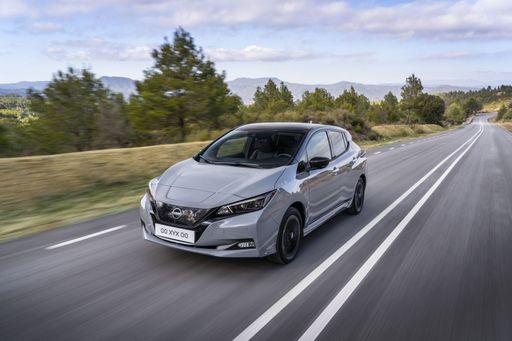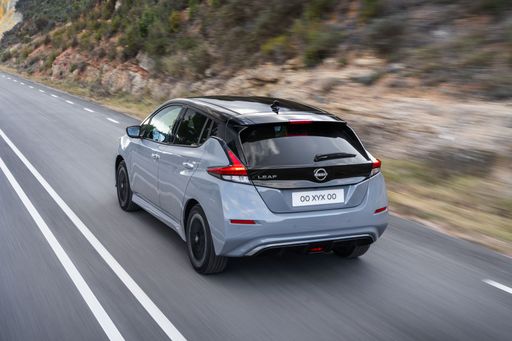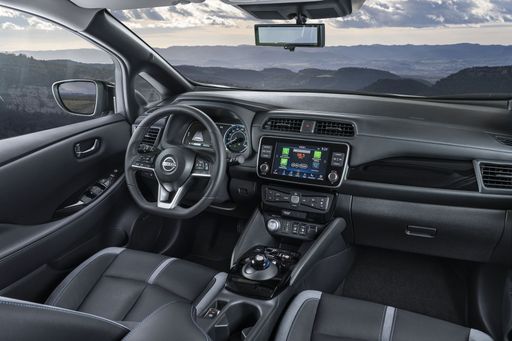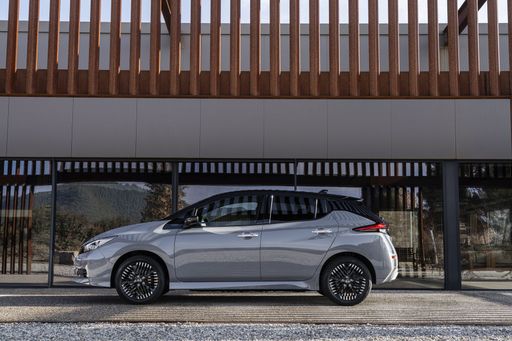Nissan Leaf vs SERES 3 – Which one offers the better deal?
Both models have their strengths – but which one suits you more?
Compare performance, efficiency, price and space directly: Nissan Leaf or SERES 3?
Costs and Efficiency:
When it comes to price and running costs, the biggest differences usually appear. This is often where you see which car fits your budget better in the long run.
Nissan Leaf has a slight advantage in terms of price – it starts at 30800 £, while the SERES 3 costs 31600 £. That’s a price difference of around 866 £.
In terms of energy consumption, the advantage goes to the Nissan Leaf: with 16.70 kWh per 100 km, it’s barely noticeable more efficient than the SERES 3 with 18 kWh. That’s a difference of about 1.30 kWh.
As for range, the Nissan Leaf performs evident better – achieving up to 385 km, about 84 km more than the SERES 3.
Engine and Performance:
Power, torque and acceleration say a lot about how a car feels on the road. This is where you see which model delivers more driving dynamics.
When it comes to engine power, the Nissan Leaf has a evident edge – offering 217 HP compared to 163 HP. That’s roughly 54 HP more horsepower.
In acceleration from 0 to 100 km/h, the Nissan Leaf is significantly quicker – completing the sprint in 6.90 s, while the SERES 3 takes 9.90 s. That’s about 3 s faster.
In terms of top speed, the Nissan Leaf performs hardly perceptible better – reaching 157 km/h, while the SERES 3 tops out at 155 km/h. The difference is around 2 km/h.
There’s also a difference in torque: Nissan Leaf pulls somewhat stronger with 340 Nm compared to 300 Nm. That’s about 40 Nm difference.
Space and Everyday Use:
Cabin size, boot volume and payload all play a role in everyday practicality. Here, comfort and flexibility make the difference.
Both vehicles offer seating for 5 people.
In curb weight, Nissan Leaf is somewhat lighter – 1580 kg compared to 1765 kg. The difference is around 185 kg.
In terms of boot space, the Nissan Leaf offers convincingly more room – 394 L compared to 0 L. That’s a difference of about 394 L.
When it comes to payload, Nissan Leaf clearly perceptible takes the win – 415 kg compared to 300 kg. That’s a difference of about 115 kg.
Who comes out on top?
Overall, the Nissan Leaf shows itself to be wins the duel decisively and secures the title of DriveDuel Champion.
It convinces with the more balanced overall package and proves to be the more versatile choice for everyday use.
 @ Nissan Motor Corporation
@ Nissan Motor Corporation
Nissan Leaf
Nissan Leaf
The Nissan Leaf stands out as a pioneering model in the realm of electric vehicles, known for its impressive blend of practicality and eco-friendliness. It offers a smooth and quiet driving experience, making it an ideal choice for city commuting and longer journeys alike. The interior design is both comfortable and intuitive, providing drivers with a sense of modernity and ease of use.
details @ Nissan Motor Corporation
@ Nissan Motor Corporation
 @ Nissan Motor Corporation
@ Nissan Motor Corporation
 @ Nissan Motor Corporation
@ Nissan Motor Corporation
 @ Nissan Motor Corporation
@ Nissan Motor Corporation
SERES 3
The SERES 3 marks an intriguing entry into the electric vehicle market, distinguished by its sleek design and advanced technology features. This compact SUV offers a commendable driving experience with its smooth handling and quick acceleration, making it a strong contender in urban environments. Additionally, the SERES 3 boasts a well-equipped interior, providing both comfort and connectivity for modern drivers.
details
 @ Nissan Motor Corporation
@ Nissan Motor Corporation
|
|
|
|
|
Costs and Consumption |
|
|---|---|
|
Price
30800 - 37200 £
|
Price
31600 £
|
|
Consumption L/100km
-
|
Consumption L/100km
-
|
|
Consumption kWh/100km
16.7 - 17.8 kWh
|
Consumption kWh/100km
18 kWh
|
|
Electric Range
270 - 385 km
|
Electric Range
301 km
|
|
Battery Capacity
39 - 59 kWh
|
Battery Capacity
-
|
|
co2
0 g/km
|
co2
0 g/km
|
|
Fuel tank capacity
-
|
Fuel tank capacity
-
|
Dimensions and Body |
|
|---|---|
|
Body Type
Hatchback
|
Body Type
SUV
|
|
Seats
5
|
Seats
5
|
|
Doors
5
|
Doors
5
|
|
Curb weight
1580 - 1756 kg
|
Curb weight
1765 kg
|
|
Trunk capacity
385 - 394 L
|
Trunk capacity
0 L
|
|
Length
4490 mm
|
Length
4385 mm
|
|
Width
1788 mm
|
Width
1850 mm
|
|
Height
1540 - 1545 mm
|
Height
1650 mm
|
|
Max trunk capacity
790 L
|
Max trunk capacity
-
|
|
Payload
384 - 415 kg
|
Payload
300 kg
|
Engine and Performance |
|
|---|---|
|
Engine Type
Electric
|
Engine Type
Electric
|
|
Transmission
Automatic
|
Transmission
Automatic
|
|
Transmission Detail
Reduction Gearbox
|
Transmission Detail
Reduction Gearbox
|
|
Drive Type
Front-Wheel Drive
|
Drive Type
Front-Wheel Drive
|
|
Power HP
150 - 217 HP
|
Power HP
163 HP
|
|
Acceleration 0-100km/h
6.9 - 7.9 s
|
Acceleration 0-100km/h
9.90 s
|
|
Max Speed
144 - 157 km/h
|
Max Speed
155 km/h
|
|
Torque
320 - 340 Nm
|
Torque
300 Nm
|
|
Number of Cylinders
-
|
Number of Cylinders
-
|
|
Power kW
110 - 160 kW
|
Power kW
120 kW
|
|
Engine capacity
-
|
Engine capacity
-
|
General |
|
|---|---|
|
Model Year
2019
|
Model Year
2020
|
|
CO2 Efficiency Class
A
|
CO2 Efficiency Class
A
|
|
Brand
Nissan
|
Brand
SERES
|
What drivetrain options does the Nissan Leaf have?
Available configurations include Front-Wheel Drive.
The prices and data displayed are estimates based on German list prices and may vary by country. This information is not legally binding.
